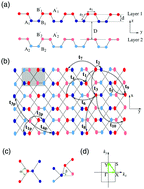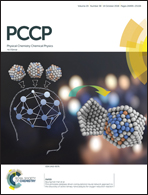Charged impurity-tuning of midgap states in biased Bernal bilayer black phosphorus: an anisotropic electronic phase transition
Abstract
In this paper, we analytically investigate the electronic density of states (DOS) of bilayer Bernal black phosphorus (BBP) in order to study the anisotropic electronic phase transition. We employ the Green's function approach, the Born approximation, and the tight-binding Hamiltonian model including ten intra-layer and four inter-layer hopping energies. BBP consisting of two coupled layers of black phosphorus is a suitable candidate for studying the layer-dependent electronic properties of few-layer black phosphorus. We examine the electronic properties of BBP under conditions in which only one layer and both layers are subjected to a dilute charged impurity and a perpendicular electric field. Our findings show that there is no phase transition when the impurity is doped on only one layer, whereas in the case of both layers, BBP suffers a phase transition from semiconductor to semimetal at strong impurity scattering potentials. Also, applying the electric field on one layer of BBP leads to an increase in the band gap, whereas in the case of both layers, the band gap decreases with the electric field and eventually, a phase transition appears at a bias voltage of more than 1.8 eV. Consequently, the band gap of BBP can be tuned by applying an electric field and a charged impurity, and thereby these findings provide insights for future experimental research on black phosphorus.



 Please wait while we load your content...
Please wait while we load your content...